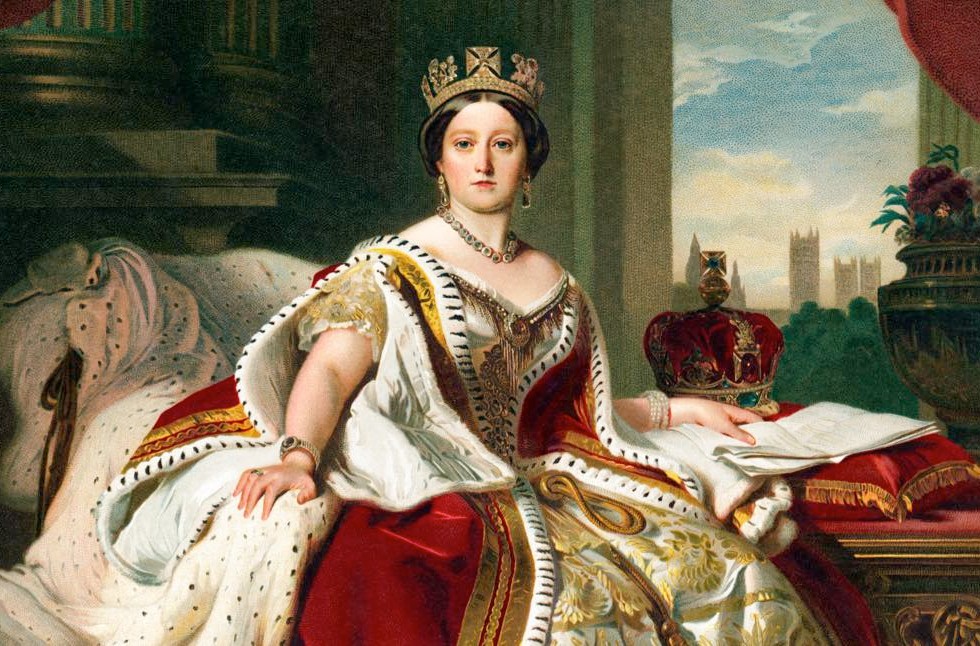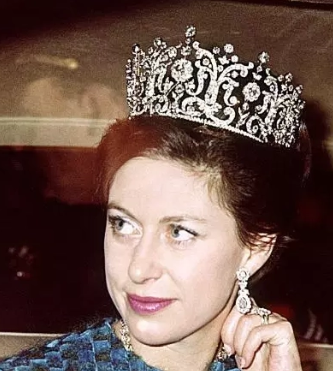
British Queen Victoria and Prince Albert, 1861
Queen Victoria was devastated by the death of her husband Prince Albert in December, 1861.* She mourned him for the rest of her life, forty full years, wearing only black and virtually becoming a hermit.
The following passage describes the extreme measures the Queen took to preserve her royal consort’s memory. This scene takes place in Windsor Castle on the day after Albert has died of (possibly) typhoid fever. Albert’s body lies in state for visitation:
On the first morning of her widowhood, she went into the Blue Room to gaze upon her beloved husband’s features. Warned by her doctors not to kiss them, she kissed his clothes instead. She had every part of the room photographed so that it could be preserved exactly as it had been at that moment of the night, ten minutes to eleven on 14 December 1861, when her own life had been shattered….
Bust of Prince Albert, Minton & Co. from the original sculpture portraits by Carlo Marochetti (1805 - 67), England, Original sculpture 1851, made 1862.
She gave orders for Albert’s dressing gown and fresh clothes to be laid each evening on his bed and for a jug of steaming hot water to be placed on his washstand. Between the two beds in the room a marble bust of him was placed; above it she had his portrait hung, wreathed with evergreens; and almost every day fresh flowers were strewn beneath it on the pillows. The glass from which he had taken his last dose of medicine was kept on the table beside it where it remained for more than forty years. On his writing table his blotting book lay open with his pen upon it as though it were waiting for him to pick up. Guests at Windsor were required to write their names in his visitors’ book as well as in the Queen’s, ‘as before’….She had herself photographed gazing up at his bust; and she went to bed each night clasping one of his nightshirts and with a cast of his hand close enough for her to touch it with her fingers. (1)
*See a related post on this blog, “Mary Lincoln Goes Goth,” and read how Queen Victoria got her notorious nickname, “Mrs. Brown.”
(1) Hibbert, Christopher. Queen Victoria: A Personal History. (New York: Basic Books, 2000)




















The love shared between Queen Victoria and Prince Albert, the Prince Consort is one of the most beautiful and heart-warming stories ever told. In a day when royal marriages were conducted based on diplomacy, theirs was truly a love match.
LikeLike
Queen Victoria did tax Albert’s patience though.
LikeLike
I’m sure that putting him in his place from time to time and gently reminding him just who is ‘running the show’ was a bit annoying. But from all I’ve read, Prince Albert was the Queen’s most trusted and confidant advisor?
LikeLike
My research on Victoria and Albert has been cursory at best, but I don’t recall reading that Victoria put Albert in his place from time to time, as you put it. Rather, Albert was very nervous as he was trying to solve too many problems at court. Victoria had explosions of temper and found it hard to settle down. They had too many children and a large job. Albert was Victoria’s confidante, yes, and righthand man.
LikeLike
I think the idea that Victoria “put Albert in his place” may have come from the recent depiction in “The Young Victoria”. The movie portrays Victoria as being strongly influenced and controlled by Lord Melbourne–until he gives her permission to allow Albert to help with affairs of the kingdom. It does appear that the movie is highly stylized and not particularly historically accurate. Apparently, even though Victoria did fall in love with Albert at first sight, it does appear that she did not consent to marriage until after she had gotten herself into quite a mess. One of the scandals centered around Lady Hastings. Although Victoria was highly intelligent, she did not seem to possess the gift of diplomacy that Albert appeared to be naturally gifted with. From what I have read, Victoria always blamed her son for Albert’s death (the crown prince Edward). Apparently, he had been involved in a great scandal that Albert had to intervene in very close to his death. It seems that Albert was already in a weakened state physically, and the scandal did prey upon his mind. Albert seems to have taken everything too much to heart and was already compromised physically when he was struck with the supposed typhoid fever that ultimately led to his demise. If stress is a factor is recovering from and being susceptible to disease (as we now believe), Victoria was probably right.
LikeLike
Ms TA, I have not seen the new film so your insight is helpful. Victoria was not in a hurry to marry and her marriage to Albert was challenging. She did blame the crown prince for stressing out Albert (Eddie was named as a co-respondent in a divorce) but typhoid fever was virulent enough to kill Albert. Thanks for your comments and keep coming back to Lisa’s History Room.
LikeLike
Your site delightful! Interestingly, historians are now shying away from typhoid as Albert’s cause of death. Apparently there is evidence that he was in declining health for the preceeding two years, suggesting cancer or renal failure. He was an interesting, well educated person who pursued many public health reforms.
LikeLike
Mrs. Whit, could you tell me where you got your info on Albert’s health? Thanks for sharing and keep coming back to Lisa’s History Room.
LikeLike